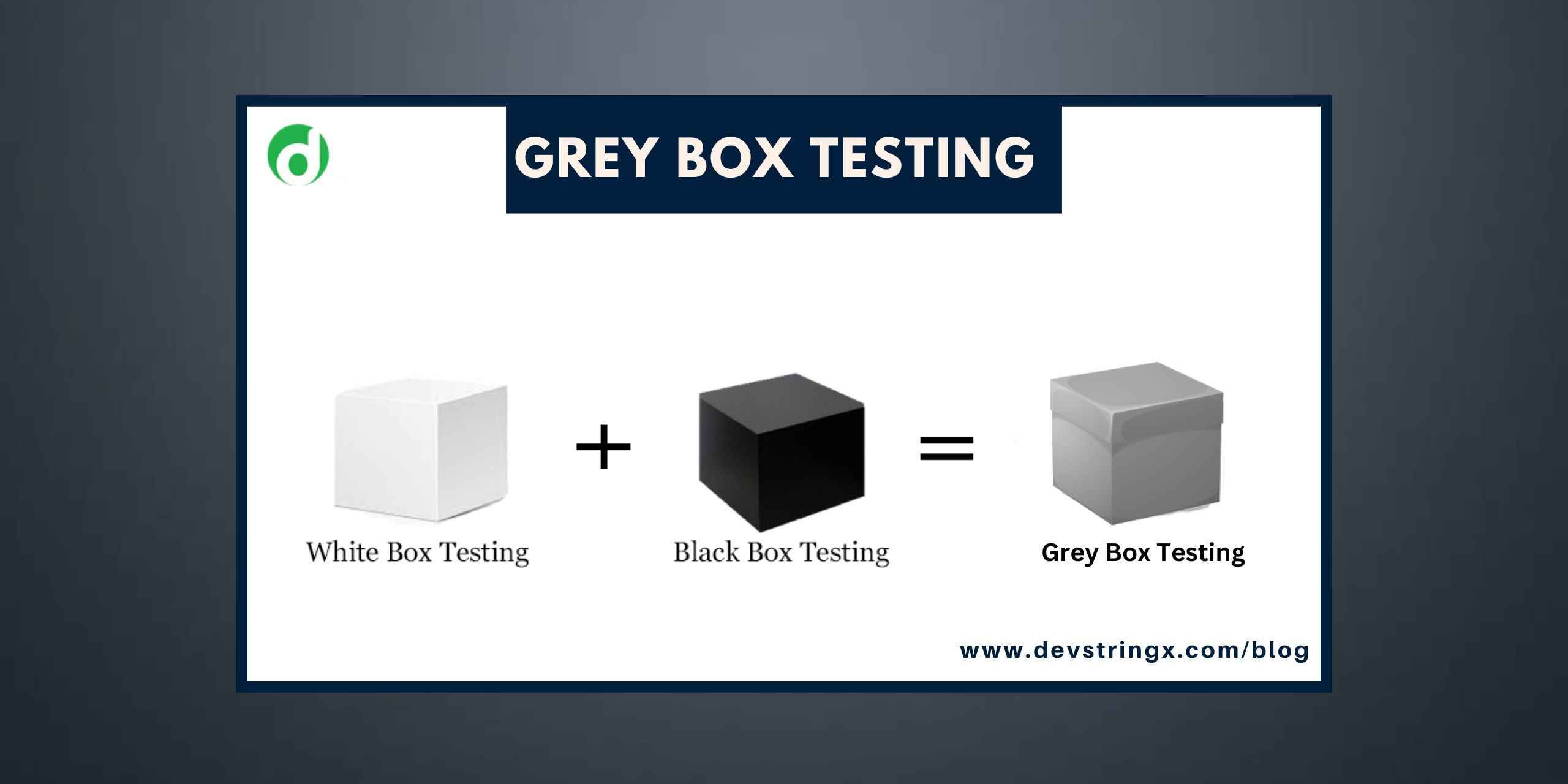What Is a Grey Box Testing? – Devstringx
What Is a Grey Box Testing?
Grey box testing techniques combine white box and black box testing techniques to investigate defects in software products and applications and security vulnerabilities. It scans web applications and is suitable for integration, penetration, and domain testing. Grey-box penetration testing is typically performed using system access, allowing testers to launch advanced attacks to find software vulnerabilities.
In white box testing, the tester understands the source code and the internal structure of the software. This allows you to test your application from a developer’s perspective and fix flaws by modifying its internal structure or code. On the other hand, in black box tests, neither the user nor the tool knows in advance the internal structure of the application. Instead, this testing method focuses on the outer layer of the application, which is usually the layer an external attacker has access. In grey box testing, the tester has partial knowledge of the application under test.
Grey box testing is often the recommended testing method because it strikes a good balance between the efficiency of black box testing and the depth of white box testing.
Types of Grey Box Testing
Next, let’s look at the different types of gray box testing.
- Matrix test
Matrix testing allows developers and testers to determine which variables to use in their applications. This technique is also useful for identifying duplicate and obsolete variables.
- Regression test
A regression test is a type of software development test run after a product has been modified to verify that the software works as expected. Software upgrades perform regularly and regression testing ensures that these updates and changes do not cause issues with other parts of the application.
- Pattern test
These tests involve examining older software versions to identify patterns that lead to bugs or defects. You can use these vulnerabilities to identify and prevent similar issues in new versions of your application.
- Orthogonal Network Test
This statistical approach to performance testing provides maximum code coverage in a minimum number of test cases when testing complex applications.
Recommended to Read- What Is White Box Testing?
What will the grey box test be used for?
A grey box test should test many important aspects.
- Internal Security Vulnerabilities: Test your application for internal security vulnerabilities. For example, you can test certain restricted actions that only users logged in with employee or member privileges can perform.
- Input Flow: Test and understand how specific inputs flow through your application.
- Output Validation: Detect and test that the expected output is returned.
- Code Path: Tests for broken and unstructured code paths.
- Conditional Loop: Tests the behavior of a conditional loop.
- Access Validation: Verifies that only users with appropriate access rights can perform operations. For example, you can test an endpoint where only admin users can delete inventory items.
The Purpose of the Grey Box Test
The purpose of grey box testing is to combine functional and non-functional testing to improve product quality and save time and lengthy application testing processes.
Another goal is to test the application from the user’s perspective, not the designer’s, and to give developers enough time to fix bugs.
Advantages and Disadvantages of Grey Box Testing
When deciding to use a grey box test, consider the following pros and cons: It helps to determine whether the grey box test is appropriate for the test situation and the value it can provide.
Advantages
- Testing is viewed from the user’s perspective to improve the overall quality of the product.
- Clear test objectives are established, which facilitates collaboration between testers and developers.
- Testing methods give developers more time to fix bugs.
- Conflicts between developers and testers can resolve
- Testers don’t need to be programmers.
- cheaper than integration testing
Disadvantage
- In distributed systems, it is difficult to trace faults to the root cause.
- Restricted access to internal application structures limits the traversal of code paths.
- It cannot be used to test algorithms.
- Designing test cases can be difficult.
Also Read:- What Is Black Box Testing?
Grey Box Testing Technique
Gray box testing techniques are designed to perform application penetration testing. These technologies allow you to test both internal threats (employees trying to work with your application) and external users (attackers trying to exploit vulnerabilities).
Grey box testing allows authenticated users to run the application as intended. It can also prevent malicious users from accessing data or features they don’t want to access.
Grey Box Testing Example
If the grey box tester understands and has access to an error code table that includes the reason for each error code, it can analyze the error code to further investigate the cause. Suppose the web page received the error code “Internal server error 500”. The cause of the error indicates in Table Server Errors.
Using this information, testers can investigate the problem further and provide more details and explanations to the developer.
When testing a website, if the tester clicks on a link and receives an error message, the gray box tester can modify the HTML code to verify the error.
In this case, the tester tests the modifications at the front end while simultaneously performing black box testing and white box testing by altering the code. White box and black box testing combine to create grey box testing.
Conclusion:
Because it includes both black-box and white-box testing strategies, grey-box testing is quite helpful. The web-based applications, functional testing, and domain testing are better suited for this testing approach. Gray box testing test cases are created for every area, such as security, database, browser, GUI, and so forth.
Compared to other testing methods, this one is more sensitive to complicated scenarios. Instead of using source code or binaries, it is constructed from functional specifications.
—————————————————————————————————————————————————-
Our Software Test Engineers have written some other detailed articles on software testing you might find of interest:
- Complete Step-by-Step Guide On Sanity Testing
Sanity Testing: Advantages, Examples, Features
- Tutorial On the Smoke Testing
What Is Smoke Testing with Example?
- The Key Difference B/W Smoke & Sanity Testing














